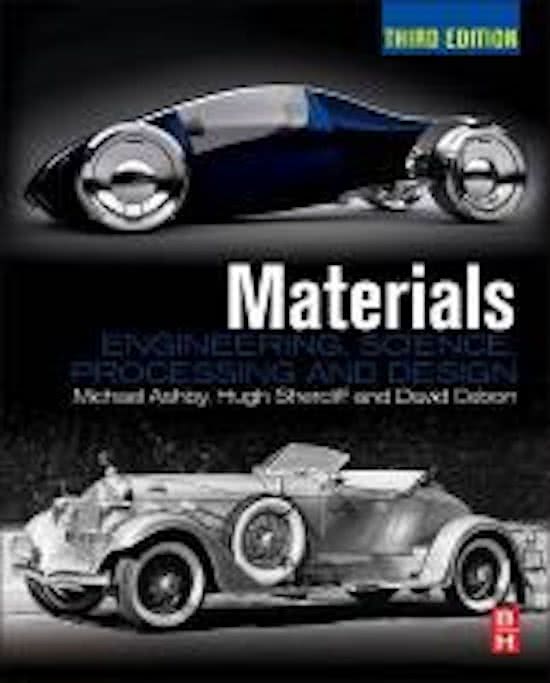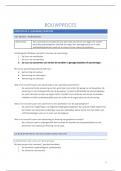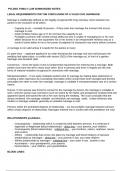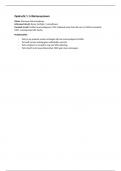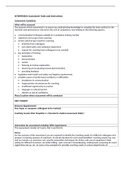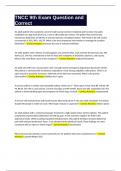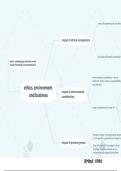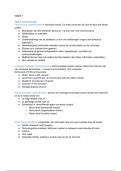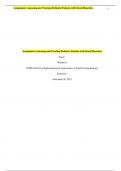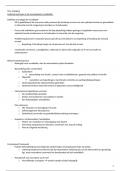Aerospace Materials and
Structures
AE1108
Delft University of Technology
1
, AE1108 Aerospace Materials and Structures
Table of Contents
Introduction: materials-history and character.……………………………………………………………………………………3
Family trees: organizing materials and processes..…….……………………………………………………………………….6
Strategic thinking: matching material to design………………………………………………………………………………….8
Stiffness and weight: density and elastic moduli………………………………………………………………………………..10
Flex, sag and wobble: stiffness-limited design……………………………………………………………………………………20
Beyond elasticity: plasticity, yielding and ductility……………………………………………………………………………..24
Bend and crush: strength-limited design……………………………………………………………………………………………31
Fracture and fracture toughness……………………………………………………………………………………………………….36
Shake, rattle and roll: cyclic loading, damage and failure…………………………………………………………………...42
Keeping it all together: fracture-limited design……………………………………………………………………………..…..45
Agitated atoms: materials and heat………………………………………………………………………………………………..…48
Running hot: using materials at high temperatures…………………………………………………………………………..54
Durability: oxidation, corrosion, degradation…………………………………………………………………………………….60
Equations to memorize……………………………………………………………………………………………………………………..67
2
, AE1108 Aerospace Materials and Structures
Introduction: materials-history and character
Materials, processes and choice
Engineers make things. They make them out of materials, and they shape, join and finish them using
processes. The materials will serve a certain purpose. The process has to be compatible with the
material you are using. Nowadays we have many materials, so most of the time it is not about
developing a new materials, but about choosing the right one. Computer analysis and storage is of
major importance for material selection.
Material properties
Mechanical properties
Density is the mass per unit volume, also written as
𝜌.
Elastic means that it springs back when released. The
elastic stiffness depends on the shape and the E-
modulus (Young’s modulus).
Permanent deformation has to do with strength. The
ease with which a material permanently deforms
depends on the shape and the yield strength 𝜎𝑦 . The
tensile strength, 𝜎𝑡𝑠 , is the strength beyond which
the material fails. High hardness 𝐻 gives scratch
resistance and resistance to wear.
The resistance of materials to cracking and fracture
is measured by the fracture toughness, 𝐾1𝑐 .
Thermal properties
3
, AE1108 Aerospace Materials and Structures
Electrical, magnetic and optical properties
Chemical aspects of materials
4
, AE1108 Aerospace Materials and Structures
Environmental properties
Making, shaping, joining and finishing materials consumes a lot of energy. Therefore it is very
important for the future to keep the environment in mind. Material sustainability is a key term here.
Design-limiting properties
The performance of a component is limited by properties of the material of which it is made of.
Processes have properties too which can be performance limiting.
5
, AE1108 Aerospace Materials and Structures
Family trees: organizing materials and processes
Getting materials organized: the materials
tree
Classifying materials
There are six broad families concerning materials:
- Metals
- Polymers
- Elastomers
- Ceramics
- Glasses
- Hybrids-composite
Metals:
- High stiffness
- 𝜎𝑦 is low for pure metals
- Tough with high 𝑘1𝑐
- Good electrical and thermal conductors
- Reactive and corrode rapidly if not protected
Ceramics:
- Stiff, hard and abrasion resistant
- Retain their strength at high temperatures, resist corrosion well
- Good electrical insulators
- Brittle, low 𝑘1𝑐
Glasses:
- The lack of crystal structure suppresses plasticity, making them hard and corrosion resistant
- Excellent electrical insulators
- Transparent to light
- Brittle and vulnerable to stress concentrations
Polymers:
- Low density
- Floppy with low E-modulus
- Properties depend on temperature
- Easy to shape
Elastomers:
- Extremely low stiffness
- Ability to be stretched to many times their starting length yet recovering their initial shape
when released
- Can be strong and tough
Hybrids:
- Combinations of two or more other materials to get the best properties
- High cost but if the cost justifies the cause the designer will use them
Organising processes: the process tree
Casting, injection molding, fusion welding and electro-polishing are all processes. The choice for a given
component depends on the design requirements.
6
, AE1108 Aerospace Materials and Structures
Classifying processes
Primary processes create shapes. Secondary processes modify shapes or properties. Then there is
joining and finally surface treatment. To organize information about processes, we need a hierarchical
classification.
Process-property interaction
Processing can change properties. Joining changes properties too. Welding involves the local melting
and resolidifying of the faces of the parts to be joined. As you might expect, the weld zone has
properties that differ from those of the material
far from the weld. Surface treatments, by
contrast, are generally chosen to improve
properties: electroplating to improve corrosion
resistance, or carburizing to improve wear.
Material property charts
To give perspective to material properties we use
a material property chart. There are two types of
charts:
- Bar chart: a plot of one property for all the
materials in the universe. Logarithmic
scales are used because the differences
are so big.
- Bubble chart: the materials are shown
with two of their properties, in the
example on the right density and Young’s
modulus. Logarithmic scales are used
again because the differences are so
extremely large.
Material property charts:
- Give an overview of the physical,
mechanical and functional properties of
materials presenting the information
about them in a compact way.
- Reveal aspects of the physical origins of
properties, which are helpful in understanding the underlying science.
- Become a tool for optimized selection of materials to meet given design requirements, and
they help us understand the use of materials in existing products.
Computer-aided information management for materials and processes
Software is now available to manage information about materials and processes, making it easier to
find data and manipulate it. Structured data are numeric, Boolean (Yes/No) or discrete
(Low/Medium/High) and can be stored in tables. Unstructured data take the form of text, images,
graphs and schematics. This information is more difficult to use for selection, but it is essential in
making a final choice of material
7
, AE1108 Aerospace Materials and Structures
Strategic thinking: matching material to design
A design-led strategy is a strategy which uses the requirements of the design as inputs. Design starts
with a market need. The need is analyzed, expressing it as a set of design requirements. Ways to meet
these requirements (concepts) are sought, developed (embodied) and refined (detailed) to give a
product specification. The selection strategy involves four steps:
- Translation
- Screening
- Ranking
- Documentation
The design process
Original design is a design starting from scratch. Evolutionary design (redesign) is improving an existing
product (cost, performance, etc.)
Original design
New materials can sometimes enable a revolutionary design. The starting point is a market need or a
new idea. The end point is called the product specification. The need needs to be specified, formulated
as a need statement. It is expressed as design requirements.
At the conceptual design stage, all options are still open. The next stage, embodiment, takes the
promising concepts and seeks to analyze their operation at an approximate level. The embodiment
stage ends with a feasible layout that becomes the input to the detailed design stage. Here,
specifications and dimensions for each component are drawn up. A final choice of geometry and
material is made, and the methods of production are analyzed and costed. The stage ends with a
detailed production specification.
Redesign
Scenarios that call for redesign:
- Product-recall: a product does not meet certain standards.
- Poor value for money: performance is too low, higher performance is required.
- Inadequate profit margin: the cost of manufacture exceeds the price that the market will bear.
- Sustainable technology: materials used are more sustainable after the redesign because the
market wants this.
- Mac-effect: in a market with many identical products, it is the style, image and character that
sets some products above others.
Material and process information for design
The first steps of design still have a very large choice of material, the further the step the fewer the
options for materials. In the final design stage it is important to ask several manufacturers for the
specifications of the material since the same product will have different specifications depending on
the manufacturer. In-house tests might also be conducted. The process of manufacture is also a
limiting factor, the choice of materials goes hand in hand with the material choice. The interaction
between material, shape and process lie at the heart of the selection process.
The strategy: translation, screening, ranking and documentation
The first task is that of translation: converting the design requirements into a prescription for selecting
a material. This proceeds by identifying the constraints that the material must meet and the objectives
that the design must fulfill. The second task, then, is that of screening: eliminating the materials that
cannot meet the constraints. This is followed by the ranking step: ordering the survivors by their ability
to meet a criterion of excellence such as that of minimizing cost. The final task is to explore the most
8
, AE1108 Aerospace Materials and Structures
promising candidates in depth,
examining how they are used at
present, case histories of failures, ad
how to best design and manufacture
with them-a step we call
documentation.
Translation
Any engineering component has one or
more functions. This must be achieved
subject to constraints. In designing the
component, the designer has one or
more objectives. There will also be free
variables: these are free to choose.
Constraints, objectives and free
variables define the boundary
conditions for selecting a material. The
distinction between a constraint and an objective should be clear: a constraint is an essential condition
that must be met, an objective is a quantity for which an extreme value is sought..
Screening
Screening eliminates the candidates that cannot do the job because one or more of their attributes
lies outside the limits set by the constraints. Attribute limits are obvious limits candidates have to meet,
such as optical transparency.
Ranking
Material indices measure how well a candidate that has passed the screening step can do the job. The
property or property group that maximizes performance for a given design is called its material index.
Ranking ranks the screened candidates that do the job best.
Documentation
We are left with a short ranked list, we now seek a detailed profile of each: its documentation.
Documentation is typically descriptive, graphical or pictorial. Documentation helps narrow the short-
list to a final choice.
9
, AE1108 Aerospace Materials and Structures
Stiffness and weight: density and elastic moduli
Stiffness is the resistance to change of shape that is elastic. Strength is the resistance to permanent
distortion or total failure.
Density, stress, strain and moduli
Density
Density is the mass per unit volume:
𝑚
𝜌=
𝑉
In this formula:
- 𝜌: density
- 𝑚: mass
- 𝑉: volume
Modes of loading
Stress
The tensile stress 𝜎 in an element (neglecting its own weight) is:
𝐹
𝜎=
𝐴
In this formula:
- 𝜎: stress
- 𝐹: force
- 𝐴: area
When the force is compressive, a negative sign should be given.
Shear stress
If the force is parallel to the face of the element, a shear stress is created:
𝐹𝑠
𝜏=
𝐴
In this formula:
- 𝜏: shear stress
10


